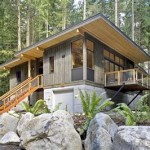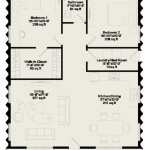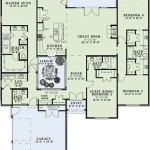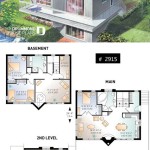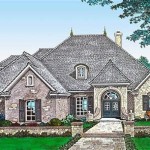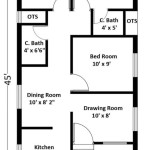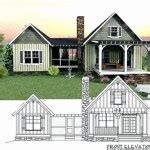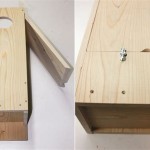Modern Split Level House Plans: Space, Style, and Versatility
Modern split-level house plans offer a unique architectural solution for homeowners seeking a blend of space, distinctive style, and adaptable living areas. This design, popular in the mid-20th century and experiencing a resurgence in contemporary architecture, addresses diverse needs by separating living areas across multiple levels, often in a staggered configuration. The resulting layout can optimize land usage, offer enhanced privacy, and create a visually interesting home design. This article will delve into the characteristics, advantages, and considerations associated with modern split-level house plans, examining how they cater to the demands of modern living.
A defining characteristic of the split-level design is its arrangement of living spaces on different planes, connected by short staircases. This arrangement typically separates the house into three or more distinct levels. The entrance level usually incorporates the living room, dining area, and kitchen. A short flight of stairs leads up to the bedroom level, housing the sleeping quarters and bathrooms. Another flight of stairs descends from the entrance level to a lower level, which often contains a family room, recreational space, laundry facilities, and sometimes an additional bedroom or home office.
Modern interpretations of the split-level design often incorporate open floor plans, large windows, and contemporary materials to enhance natural light and visual flow. This addresses a common critique of older split-level designs, which sometimes felt closed-off and compartmentalized. The emphasis is now on creating bright, airy spaces that seamlessly connect with the outdoors.
Distinct Zoning and Enhanced Privacy
One of the primary benefits of split-level house plans lies in their ability to create distinct zones within the home. The staggered levels naturally separate living, sleeping, and recreational areas, offering a degree of privacy that can be particularly valuable for families with children, home-based businesses, or individuals seeking a quiet retreat. By physically separating these zones, noise transmission is minimized, and each area can maintain its intended function without disrupting activities in other parts of the house.
The separation of the bedroom level from the main living area provides a dedicated space for rest and relaxation, shielded from the bustle of daily activities. Similarly, placing the family room or recreational space on a lower level allows for louder activities without disturbing those in the bedrooms or living room. This zoning is a key factor in creating a comfortable and functional living environment for diverse lifestyles.
Furthermore, the split-level design can provide a natural buffer between the public areas of the home (such as the living room and dining area) and the more private spaces. This can be particularly appealing for homeowners who frequently entertain guests but also value their privacy and personal space. The staggered levels create a sense of separation that can enhance both the social and personal aspects of home life.
Adaptability and Efficient Land Use
Split-level house plans are known for their adaptability to various lot configurations, especially those with sloping or uneven terrain. Rather than requiring extensive excavation and grading to create a level building site, the split-level design can be easily adapted to follow the natural contours of the land. This can result in cost savings during construction and minimize the environmental impact of the building process. The design can also create interesting outdoor spaces, such as patios or decks that seamlessly integrate with the different levels of the home.
The inherent flexibility of the split-level plan allows for variations in room sizes and configurations to accommodate specific needs and preferences. The lower level, for instance, can be finished as a home theater, a guest suite, or a dedicated workspace, depending on the homeowner's requirements. This adaptability makes split-level plans a versatile option for growing families or individuals with evolving lifestyle needs.
From a space utilization perspective, the staggered levels can maximize the usable square footage within a smaller footprint. By distributing living spaces vertically rather than horizontally, the split-level design can make the most of available land, particularly in areas where lot sizes are limited. This efficient use of space can be a significant advantage in urban or suburban settings.
Modern Styling and Architectural Appeal
Contemporary split-level designs have moved beyond the often-dated aesthetic of their mid-century predecessors. Modern interpretations embrace clean lines, minimalist detailing, and a focus on natural light and open spaces. Large windows, skylights, and strategically placed doors blur the boundaries between indoor and outdoor spaces, creating a sense of connection with the surrounding environment.
The use of contemporary materials, such as sustainable cladding, energy-efficient windows, and modern interior finishes, enhances the aesthetic appeal and contributes to the overall sustainability of the home. Open floor plans are frequently incorporated to create a sense of flow between the different levels, while strategically placed staircases serve as architectural focal points.
The staggered levels of a split-level house can also create opportunities for unique architectural features. For example, a two-story entryway or a vaulted ceiling in the living room can add visual interest and enhance the sense of spaciousness. The exterior design can be tailored to complement the surrounding landscape, creating a harmonious blend of architecture and nature. The incorporation of contemporary landscaping techniques can further enhance the curb appeal and create inviting outdoor living spaces.
When considering a split-level house plan, it is important to carefully evaluate the specific needs and preferences of the inhabitants. Factors such as accessibility, privacy requirements, and lifestyle patterns should be taken into account. Collaborating with an experienced architect or designer can help to tailor the plan to the specific site conditions and ensure that the finished product meets the homeowner's expectations.
Furthermore, it is essential to consider the potential challenges associated with split-level homes. The short staircases between levels may pose difficulties for individuals with mobility issues. Careful planning is required to ensure that the design meets accessibility requirements and provides comfortable living spaces for all occupants. The staggered levels can also create challenges for heating and cooling, requiring careful attention to insulation and ventilation. A well-designed HVAC system is crucial to maintain consistent temperatures throughout the home.
Despite these potential challenges, modern split-level house plans offer a compelling combination of space, style, and versatility. Their ability to adapt to sloping sites, create distinct living zones, and embrace contemporary design trends has made them a popular choice for homeowners seeking a unique and functional living environment. By carefully considering the specific needs and preferences of the inhabitants and working with experienced professionals, it is possible to create a split-level home that is both aesthetically pleasing and perfectly suited to its occupants' lifestyle.
The ongoing trend of incorporating sustainable building practices into residential architecture further enhances the appeal of split-level designs. The integration of energy-efficient windows, solar panels, and rainwater harvesting systems can reduce the environmental footprint of the home and lower utility costs. The use of sustainable materials, such as reclaimed wood and recycled content, can further contribute to the overall sustainability of the project.
The revival of the split-level house plan is a testament to its inherent adaptability and enduring appeal. By embracing contemporary design principles and incorporating sustainable technologies, modern split-level homes offer a compelling alternative to traditional housing options. Whether adapting to sloping sites or creating distinct living zones, these designs provide a unique blend of space, style, and versatility that caters to the diverse needs of modern homeowners.

Split Level Home Designs For Sloping Blocks G J Gardner Homes

Monterey Mcdonald Jones Homes

What Is A Split Level House Characteristics 4 Types

Modern House Plans Floor Designs The Designers
Our Top 7 H Style House Plans

4 Bed Modern Ranch House Plan With Flex Room 4457 Sq Ft Floor Luxe Dreamer

Our Top 7 H Style House Plans

Open Concept 4 Bedroom Ranch House Plans Blog Floorplans Com

One Story Ranch House Design Bonus Room

Sadie House Plan Modern Style Two Story
Related Posts

